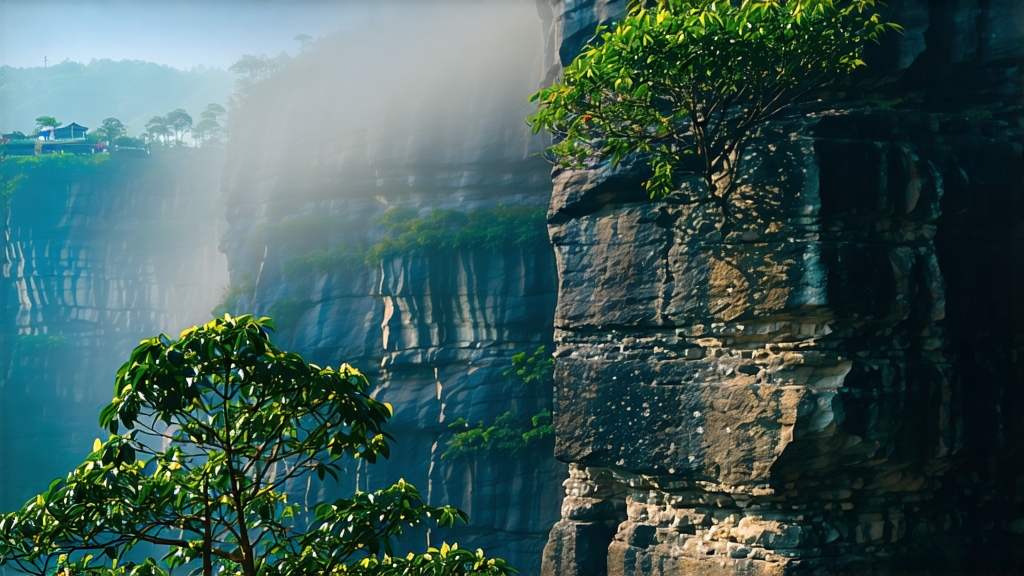
High in the mist-crowned Wuyi Mountains of northern Fujian, where vertical cliffs drop into the Jiuqu Stream’s hair-pin bends, grows the most mythic of all oolong teas—Da Hong Pao, literally “Big Red Robe.” Its very name evokes imperial crimson, yet the color refers to the story of a Ming-dynasty scholar whose life was saved by this tea; in gratitude he draped his own red robe over the four mother bushes that still cling to a narrow cleft in the rock. For four centuries those gnarled shrubs have been worshipped, their leaves auctioned for more than gold by weight, and their genes propagated across the region to create a sprawling family of cultivars that carry the rock rhyme—yan yun—of Wuyi’s terroir.
History and Lineage
The earliest written record appears in the late Ming “Cha Shuo,” noting tribute batches sent to the Forbidden City. By the Qing, Da Hong Pao was one of the 64 prestigious “Northern Fujian Tributes,” shipped north along the Tea Road that later inspired Russian caravans. When the mother bushes were last harvested in 2006—after which the Chinese government declared them off-limits—just 20 g reached the market at 19,800 USD. Today what circulates as Da Hong Pao is either a blend of selected Wuyi cultivars (Qidan, Beidou, Que She) that mimic the original flavor, or direct descendants grafted from cuttings taken in 1985 under a secretive state program. Thus every sip connects modern drinkers to an unbroken genetic line anchored in volcanic tuff and mineral springs.
Terroir: The Cliff Gardens
Wuyi’s danxia landforms create a unique microclimate: daytime heat reflected off red sandstone, night chill rolling up the ravines, and a constant veil of mist that slows photosynthesis, thickening leaf cuticles. The soil is so porous that rainwater drains instantly, forcing roots to probe fissures for trace elements—manganese, lithium, rare earths—that later translate into the famed “rock bone” texture. Gardens are classified into three zones: Zhengyan (core cliff), Banyan (semi-cliff), and Zhouyan (river terrace). Only Zhengyan leaf, grown within the 60 km² UNESCO reserve, can legally claim the highest grade, but even a few hundred meters outside the flavor flattens, losing the flinty finish that connoisseurs call “the sound of stone.”
Cultivars within the Red Robe Family
- Qidan (奇丹): the closest DNA match to the mother trees, distinguished by a peppery top note and lingering orchid aroma.
- Beidou (北斗): bred for frost resistance, it offers a brighter cup with honeyed peach and a cooler throat feel.
- Que She (雀舌): “Sparrow Tongue,” a smaller-leaf variant that yields a lighter liquor with magnolia fragrance and a silky, almost milky body.
Blenders often marry the three, aiming for a harmonic arc: Que She for aroma, Qidan for structure, Beidou for sweetness. The proportion is a closely guarded secret of each roasting master, much like the recipe of a Bordeaux château.
Crafting the Rock Tea: Eight Stages of Transformation
Plucking: only the middle 3–4 leaves are taken when the leaf edge turns matte, indicating optimal polyphenol balance.
Withering: leaves are spread on bamboo racks inside the cave-like factory; cool mountain air is fanned underneath for 4–6 h, reducing moisture to 68 %.
Shaking: the most athletic step. Tea is tossed into tall wicker drums that rotate 30 times per minute, bruising edges to initiate oxidation while preserving the green heart. Masters listen for a rustle like autumn chestnuts—when that sound softens, oxidation is complete.
Fixation: a 280 °C wok arrests enzymes within 3 min; the leaf must emit a roasted chestnut note without scorching.
Rolling: double-action machines twist leaves into the characteristic strip-and-bead shape, breaking cell walls to release oils.
Roasting: the soul of Wuyi craft. Using local Masson pine charcoal, the tea undergoes two low fires (80 °C, 2 h each) separated by 30 days of rest, then a final high fire (120 °C, 30 min) to seal